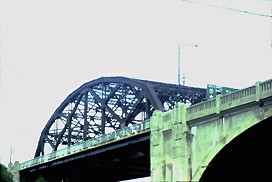 |
Hill To
Hill Bridge |
- Location: Route 378, Bethlehem, PA
- Waterway: Lehigh River (and Reading Railroad line); the bridge
joins Bethlehem and South Bethlehem)
- Bridge features: 9 approaches, 11 abutments, 48 piers, 58
spans
- Year: 1924
|
Bridge Type: concrete arch
bridge with two metal truss bridge sections |
BRIDGE HISTORY
Planning for the Hill to Hill Bridge began with the free bridge
movement of 1891. After many set backs and forty seven plans (as
of 1919), work began on the bridge on August 1, 1921. High steel
towers for pouring concrete were erected and two central concreting
plants were also constructed. The work at the height of operations
employed 350 men. During the summer of 1922, 1000 cubic yards
of concrete were poured in a 24-hour day. The original bridge
has nine approaches, eleven abutments, forty-eight piers, and
fifty-eight spans. It was considered an engineering marvel when
it was first constructed.
Later structural changes included a new span in 1965 to carry
Route 412 over East Fourth Street and the Lehigh Street ramp was
removed. In 1967, the Plaza in the center of the Hill to Hill
Bridge was removed. In 1973, the Second Street ramp was closed
to traffic as it was considered a traffic hazard. A major rehabilitation
contract consisting of structural repairs, re-decking and resurfacing,
curbside walls, drainage system improvements, painting of steel
structures, and new traffic signals cost 8.6 million dollars;
these repairs began in 1990.
BRIDGE STRUCTURES
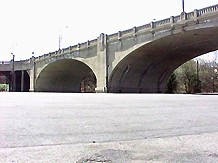 |
|
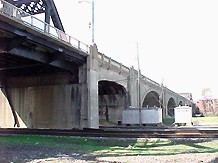 |
| The arch ring on this bridge is a single unit
(solid, with no ribs) - termed an arch barrel. Reinforced concrete arch
barrel spans are the major structural elements in this complicated bridge. |
|
The bridge passes over the Lehigh Valley Railroad
line today. |
|
|
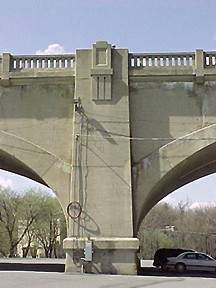 |
| Simple columns suggest a classical architectural
influence. This part of the bridge is where the Main Street approach joins
Route 378. |
|
This pier has the force of two arches (left
and right) pressing in against it. |
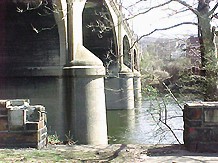 |
|
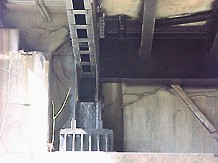 |
| Here are bridge piers on the upstream side
of the Lehigh River. They are shaped to protect the bridge from flood
debris. |
|
Here is the bearing seat of one of the metal
truss sections of the bridge where it joins the cement structure. |
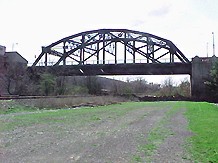 |
|
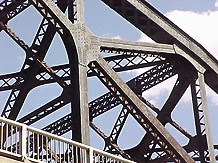 |
| An overall arch structure forms the top of
the two truss structures. |
|
Bridge trusses include diagonals which both
include laced sides. |
 |
|
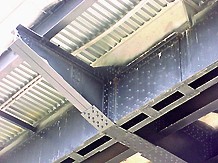 |
| This view of lower chords and lower floor beams
show how these structural elements form a rectangular pattern as seen
from under the bridge. |
|
The cantilevered sidewalk extends beyond the
bridge trusses. |

